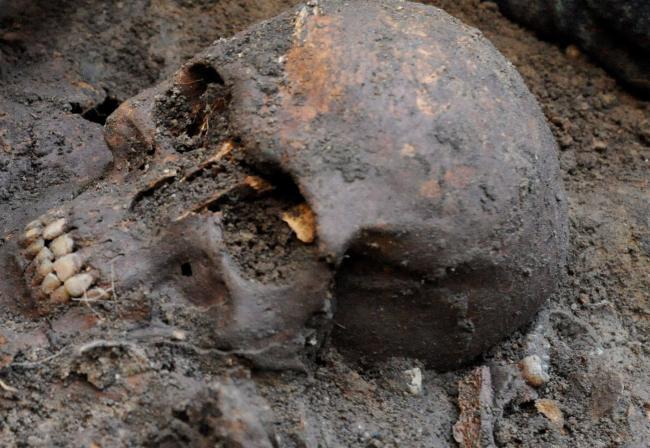
Oldest Human Virus Found in 4,500-Year-Old Bronze Age Skeleton.
Hepatitis B was discovered in the 1960s, and a vaccine (and Nobel Prize) came swiftly thereafter.
Despite the vaccine, the virus still kills people, and chronic infections cannot be cured. Nearly 900,000 people with the virus died in 2015, mostly from liver complications, according to the World Health Organisation. An estimated 257 million people carry the virus that targets the liver and can be a risk factor for cancer.
Wayward viral particles in the blood also catch in teeth and bones. In some ancient humans, the virus became entombed in these hard materials – until researchers cracked open the samples and sequenced the DNA strands inside.
The study authors examined 304 samples of humans from Europe and Asia, who lived between 200 and 7000 years ago, to look for hepatitis B DNA.
Researchers found matches for the virus in the remains of 25 people, including in the bones of a warrior buried in a mass grave in Mongolia.
From these sequences, the researchers generated 12 hepatitis B genomes. These are the oldest viral genomes recovered from human or vertebrate samples, the authors said. (Though evolutionary biologist Hendrik Poinar, a professor at Canada’s McMaster University, who was not involved in this study, predicted this superlative “won’t stand too long”.)
The team found 12 ancient hepatitis B genomes, including a now-extinct type of the virus. To get the genetic sequences, the researchers had to do the molecular equivalent of a dumpster dive.
“We have screened what we normally call the waste product,” study co-author Eske Willerslev, an evolutionary geneticist at the University of Copenhagen in Denmark, told reporters on Tuesday.
The scientists used a technique called shotgun sequencing, which shreds long strands of DNA at random (as if blasted by shotgun pellets) and clones the fragments.
Thanks to the high volume of DNA, geneticists can stitch together an organism’s genome. But the shotgun process churns out plenty of non-human DNA, courtesy of long-dead infections and other contamination, which Willerslev and his colleagues typically ignored.
“But now we have started investigating this waste product,” he said.
The viruses were not trapped alive in the bones. “Just to make it crystal clear, the sequences of viruses that we find are highly fragmented,” said Barbara Muhlemann, a Ph.D student at the University of Cambridge and the lead author of the study, published in the journal Nature.
There is “absolutely no danger” that someone could contract ancient hepatitis by touching a skeleton, she said.
Poinar said the technology to perform this work existed for about five years, but it took the right samples to achieve these results.
“I think this is the real benefit to ancient DNA,” he said. Scientists can now detect the presence of “key viral genomes at specific points in time” without other physical evidence for a virus’s existence. Previously, hunts for ancient viruses often began with the examination of lesions on human remains, as was the case of a 500-year-old pock-marked mummy in Italy found to have hepatitis B.
Ancient viral genomes give scientists rough histories of infection. These histories can strengthen hypotheses or discard them, Willerslev pointed out. There had been speculation hepatitis B originated in the New World and spread to Europe about 500 years ago. That idea is “certainly wrong,” he said, given the samples’ age.
“It looks like several of the ancient hepatitis B viruses occurred in different geographical regions than their closest modern relatives,” said Alexander Suh, an evolutionary biologist at Uppsala University in Sweden who was not a part of this study. “This provides a glimpse into how the geographic distribution of this disease agent has changed over time.”
Some versions of the ancient hepatitis virus still infect humans. Another died out. “One of the really cool things is it shows the presence of genotypes that are no longer circulating today – that is, they have gone extinct. We’d expect this,” Poinar said, “but to see it is really neat.”
Willerslev said this work was the start of a catalogue of known “possible mutations” for the hepatitis B virus.
Ancient strains may or may not appear again, he said, but knowledge of the virus’s past adaptations might aid scientists trying predict how hepatitis will mutate in the future.











